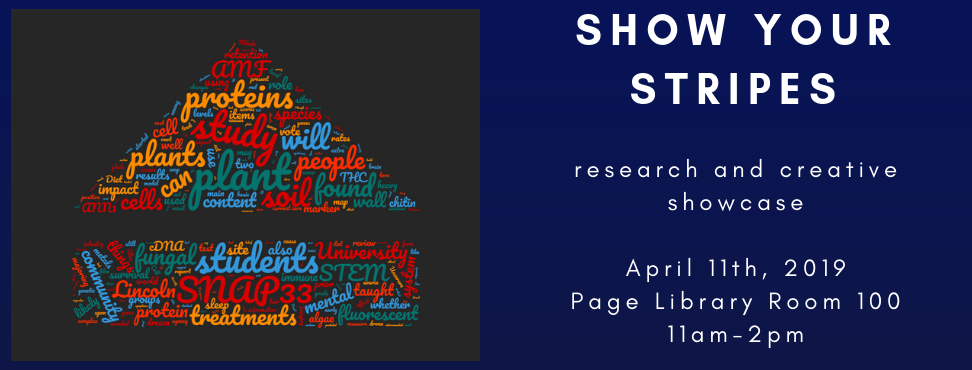Location
Inman E. Page Library, Room 317
Start Date
4-11-2019 11:30 AM
End Date
4-11-2019 11:45 AM
Description
When plants are attacked by pathogenic fungi, plants defend themselves by "chewing" the fungal cell wall. Chitin, a main component of the fungal cell wall, is released and recognized by the plant cells to activate the innate immune response in the whole plant. The objective of this study is to investigate the cellular localization of the proteins encoded by two chitin-induced genes, Annexin 1 (ANN1) and SNAP33, from the genetic model Arabidopsis thaliana. The full-length cDNA (excluding stop codon) of ANN1 and SNAP33 were amplified from cDNA template and cloned into a binary vector pMDC83 to form a translational fusion with GFP (green fluorescent protein). We transiently expressed our fusion proteins using Agrobacterium tumefaciens infiltration into tobacco epidermal cells. To determine the subcellular localization, we included constructs with organelle marker proteins tagged with red fluorescent protein. We found that ANN1-GFP and SNAP33-GFP co-localized with the plasma membrane (PM) marker, indicating that both proteins localized at the PM. This research was conducted by students of Cell Molecular Biology (Spring 2018 and 2019), under the guidance of instructor.
Included in
Imaging Fluorescent Proteins in Plant Cells: A 12-week Research-Project Oriented Cell Molecular Biology Laboratory
Inman E. Page Library, Room 317
When plants are attacked by pathogenic fungi, plants defend themselves by "chewing" the fungal cell wall. Chitin, a main component of the fungal cell wall, is released and recognized by the plant cells to activate the innate immune response in the whole plant. The objective of this study is to investigate the cellular localization of the proteins encoded by two chitin-induced genes, Annexin 1 (ANN1) and SNAP33, from the genetic model Arabidopsis thaliana. The full-length cDNA (excluding stop codon) of ANN1 and SNAP33 were amplified from cDNA template and cloned into a binary vector pMDC83 to form a translational fusion with GFP (green fluorescent protein). We transiently expressed our fusion proteins using Agrobacterium tumefaciens infiltration into tobacco epidermal cells. To determine the subcellular localization, we included constructs with organelle marker proteins tagged with red fluorescent protein. We found that ANN1-GFP and SNAP33-GFP co-localized with the plasma membrane (PM) marker, indicating that both proteins localized at the PM. This research was conducted by students of Cell Molecular Biology (Spring 2018 and 2019), under the guidance of instructor.



